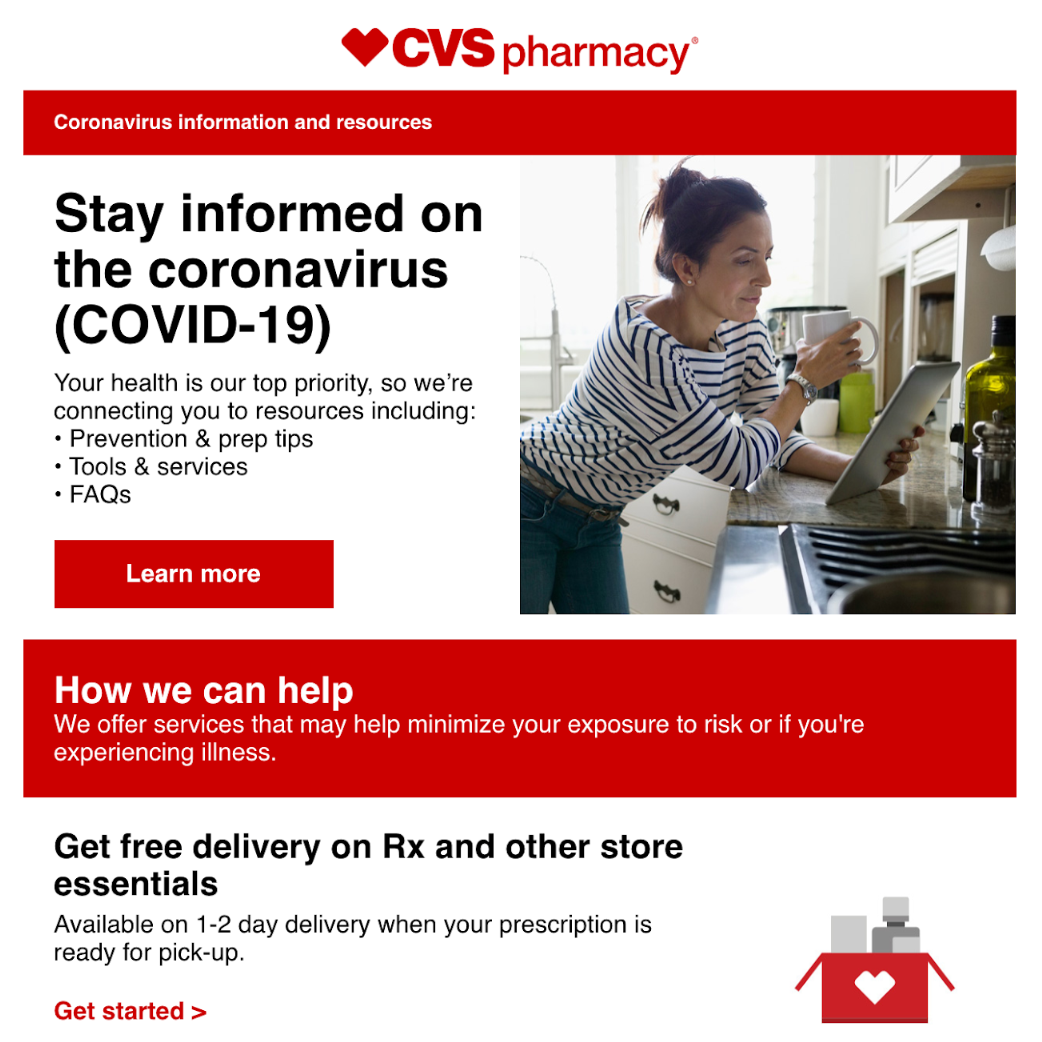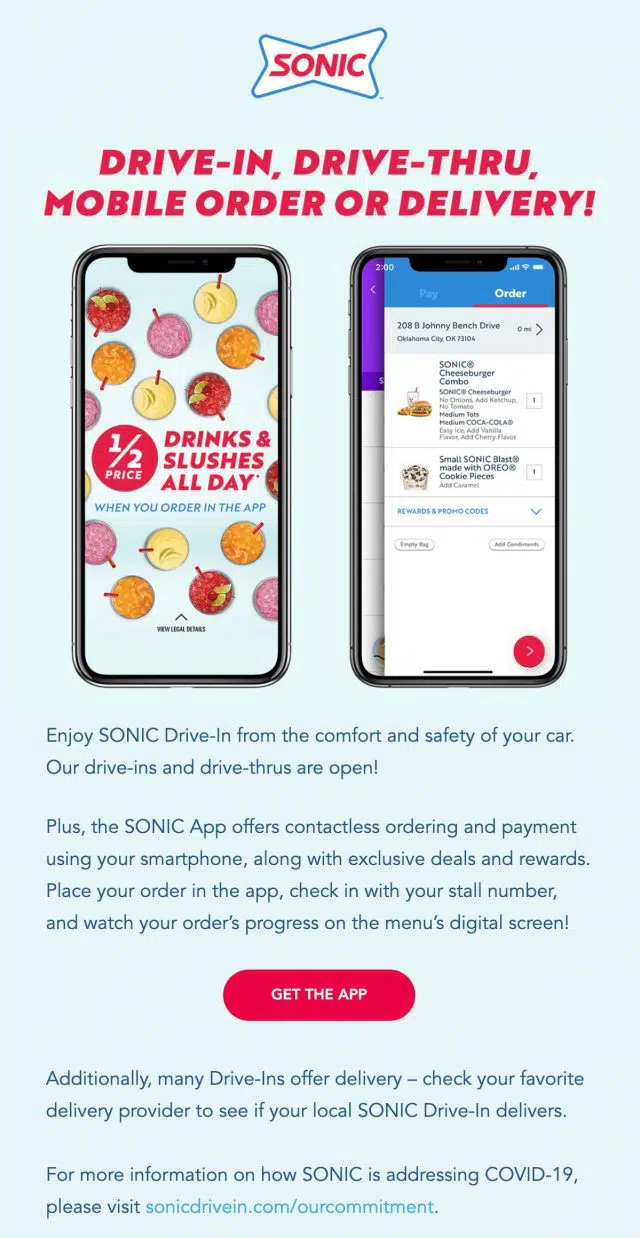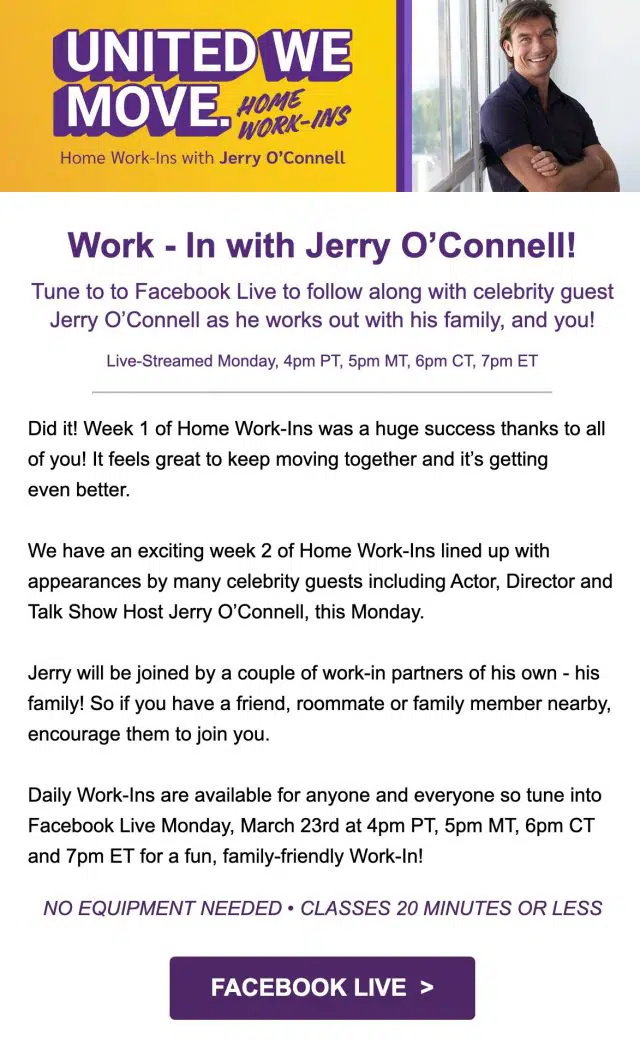Use Email Marketing The Right Way During The COVID-19 Outbreak
Email Marketing
 Posted by: Em Rohrer 4 years ago
Posted by: Em Rohrer 4 years ago

Welcome to the fifth blog post in our series designed to help local businesses attract new customers and keep current customers interested during the COVID-19 outbreak.
If you haven’t read the first four posts in our series, you can click below to check them out!
Business Blogging: How To Get Started
How To Pick The Right Blog Topics
Social Media Posting Tips For Every Business
How To Successfully Run Facebook Ads During The COVID-19 Pandemic
Have you heard that email marketing isn’t effective anymore? Email has been around longer than most other digital marketing methods and statistics show it’s far from dead. People send 102.6 trillion emails every year with the numbers steadily increasing. Experts expect the annual number to jump to 126 trillion by 2022!
In the United States alone, 90% of those sending emails are age 15 and older. Despite the rising popularity of social media channels, more than ¾ of teenagers in the US consider email to be a part of their everyday life.
Because of email’s unique versatility and popularity, no matter the age or gender of your ideal customer, you can reach them using email marketing.
The Best Ways To Use Email Marketing During A Pandemic
Over the past 6 weeks, I’ve noticed an increase in the number of emails landing in my inbox, and I know I’m not alone. Companies all over the world are reaching out via email to check in on their customers and reassure them that they’re still here during this global health crisis.
Now that we’re past the initial wave of panic from COVID-19, I want to share a few tips you can use to stay engaged with your customers and even attract new business in the coming weeks.
When To Send A Coronavirus-Related Email
Try to fight the knee-jerk reaction to send an email to your existing mailing list simply because everyone else seems to be doing it. Not every business needs to send an email reassuring its customers during the COVID-19 outbreak.
A good reason to send an email is:
- Your customers or clients are more sensitive to this type of situation and prone to anxiety.
- You have a brick-and-mortar store that will be closed for the duration of the COVID-19 crisis.
- Your services are changing and you’re offering curbside pickup, delivery, or additional options to help your customers.
- Your business is doing something completely new to helo, such as waiving fees, providing virtual support and services, etc.
If your company is largely not affected, one simple email letting your customers know that you’re still available for them is really all you need. Then you can return to more typical email marketing messages.
Consider The Tone Of Your Emails Carefully
While creative buzzwords and “business as usual” special offers can typically be effective, keep in mind that your emails may be seen differently now that we’re in the midst of a pandemic.
Be sensitive. Tensions are running high for most people, so now isn’t the time to test out humorous or edgy subject lines. Stay authentic, transparent, and consistent with your brand’s identity.
Consider your audience. Keep in mind that email marketing isn’t really about you. It’s about what your audience needs. Put yourself in their mindset and think about what information they will find valuable.
What steps are you taking to keep your customers safe? Are your programs, services, or products being changed due to the COVID-19 outbreak? What are you providing that can directly benefit your customers and attract potential new ones?
Be authentic and honest. It can be difficult to balance a positive message without acting like nothing is wrong. We’re all affected by this crisis, but you also don’t want your email marketing to be fear-inducing or negative.
For example, be careful about any email content that tries to create a fake sense of urgency around purchasing a product. Because of the shortages we’ve seen in essential products over the past weeks, most people are more sensitive to email marketing that sparks fear and uncertainty and respond negatively.
Email Marketing Examples
Below are several examples of emails companies have sent throughout the COVID-19 crisis. They can be a great way to spark creativity and get you brainstorming ways your business can reach out to your customers effectively via email.




Tools You Can Use To Help
If you haven’t started using email marketing, there are lots of tools available to help you get started. If you’re an email marketing veteran, you can still use many of these tools to breathe new life into your email campaigns!
MailChimp
As one of the most user-friendly platforms, MailChimp is easy for just about anyone to use. You can use their free plan that includes up to 12,000 email sends. This is a tool we often recommend to most of our small and medium-sized businesses.
Sender
Using Sender can be ideal because it requires very little HTML and web design knowledge. You can create visually attractive email campaigns using their easy templates. Including video, images, and personalization is simple to do using this platform. You can track who opens and clicks on your emails and create segmented lists based on the actions your email subscribers take.
Email Subject Line Tester
CoSchedule has created a tool that allows you to test out the subject lines of your emails. You can test multiple options and compare their scores to choose the best one and improve your email’s open rate.
Grammarly
We’ve all done it. Ever hit “send” on an email only to realize we misspelled a word or made a grammatical error? Grammarly is one of the best tools we’ve found to help review emails and make sure the email isn’t just error-free but also strikes the right tone of voice!
If you’re ready to get started, you always want to plan out your email marketing. This free template from Hubspot is a great place to begin and it’s compatible with Excel and Google Sheets.
Need a little help handling your email marketing? 1Eighty is here to help! Be sure to check out our other blogs about email marketing or give us a call to get started.
You May Be Interested In:
Work with Us!
Need more help with: “Use Email Marketing The Right Way During The COVID-19 Outbreak”? Let us know how we can help!
We want to be an integral part of your team to help with your digital marketing. Learn about our services or view examples of our work.





